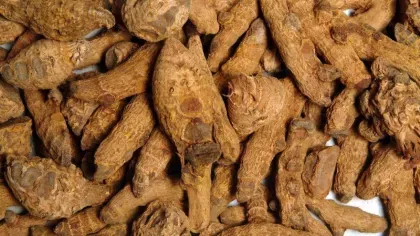
Madagascar periwinkle
On this page
The Madagascar periwinkle is valued for both its beauty and medicinal properties.
Along with being grown as an ornamental, the plant is also vital in the production of anti-cancer medications.
Originally only found on the eponymous island, the Madagascar periwinkle is now widely cultivated around the world.
Despite many of Madagascar’s native species being under threat from human activity, the periwinkle has continued to thrive, thanks to its affinity for growing in disturbed areas.
All parts of the Madagascar periwinkle are toxic if eaten. The medicinal compounds must be isolated to become effective treatments.
Plant description
Madagascar periwinkle grows as a herb or small shrub, sprawling along the ground or growing up to 1m tall. The flowers can be pink or white, with five petals and a long tube connecting them to the stem. The leaves are dark green, oval shaped, and grow in opposite pairs along the stem. The fruits are made up of two narrow, cocoon-like pods, which dry out and open to reveal a number of black, grooved seeds.



Plant uses
Cultural
Madagascar periwinkle is a popular ornamental plant for growing in pots or beds.
Health
Madagascar periwinkle is a source of anti-cancer medicines vinblastine, vincristine and vinorelbine.
Madagascar periwinkle, and other Catharanthus species, are used in both Ayurvedic and traditional Chinese medicine as treatments for diabetes, hypertension and leukaemia.
A medicine that increases insulin secretions, vincoline, has been extracted from Madagascar periwinkle.
Did you know?
The genus name of the Madagascar periwinkle, Catharanthus, is Greek for 'pure flower'.
Along with their medical importance, the periwinkle is also used as a host plant to study unique plant bacteria called phytoplasmas.
Where in the world?

Tropical and subtropical areas, on sand and limestone soils in woodland, forest, grassland, and disturbed areas.
Find it in our gardens
Kew Gardens
A botanic garden in southwest London with the world’s most diverse living plant collection.
Location
Palm House, Princess of Wales Conservatory
View map of Kew Gardens




